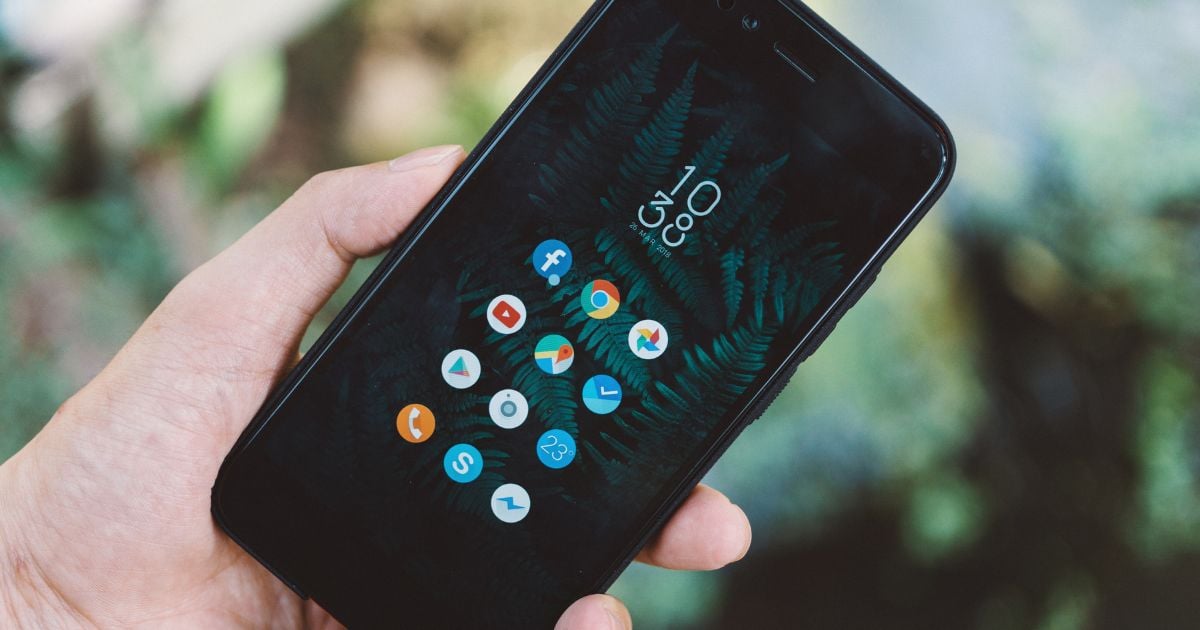Mobile Development Lifecycle: Key Stages for Efficient App Creation

The mobile app development lifecycle consists of six main stages: planning, design, development, testing, deployment, and maintenance.
Creating a successful mobile app requires careful planning and execution at each stage. Developers must consider factors like target audience, user experience, and platform selection.
They also need to think about app security and performance optimization to ensure the final product meets user needs and expectations.
By following a structured approach, developers can create high-quality apps efficiently while minimizing costs and time. This process allows for careful attention to detail at each stage, resulting in apps that are more likely to succeed in the competitive mobile marketplace.
Key Takeaways
-
The mobile app development lifecycle includes six main stages from planning to maintenance
-
A structured approach helps create high-quality apps while minimizing costs and time
-
Careful planning and execution at each stage are essential for app success
Understanding App Development
App development starts with turning ideas into concrete plans. It involves figuring out who will use the app and what problems it will solve.
Ideation and Conceptualization
The first step is coming up with an idea for an app. Developers think about what the app will do and how it will work. They make a list of features and decide which ones are most important.
Brainstorming helps create a clear vision for the app. Teams often use whiteboards or digital tools to sketch out ideas. They think about how users will move through the app and what each screen will look like.
At this stage, developers also consider technical needs. They pick which platforms the app will run on, like iOS or Android. They think about what programming languages and tools they'll use to build it.
Market Research and Target Audience
After the initial idea, developers study the market. They look at similar apps to see what works well and what could be better. This helps them find ways to make their app stand out.
Identifying the target audience is key. Developers create user profiles to understand who will use the app. They think about age, interests, and tech skills of potential users.
This research shapes the app's design and features. It helps developers make choices that will appeal to their users. They might add or remove features based on what they learn.
Market research also looks at pricing and how to make money from the app. Developers decide if the app will be free, paid, or use in-app purchases.
Planning and Strategy
Planning and strategy form the foundation of successful mobile app development. This phase sets the direction for the entire project and ensures alignment with business goals.
Project Initiation
Project initiation marks the start of the mobile app development process. The team defines the app's purpose and target audience. They research market trends and competitor apps to identify opportunities. Key stakeholders meet to discuss the project scope and requirements.
This stage also involves assembling the development team and assigning roles.
A project charter outlines the app's vision, objectives, and success criteria. The team creates a rough budget estimate and secures initial funding. They also identify potential risks and develop mitigation strategies.
Defining Objectives and Project Timeline
Clear objectives guide the app development process. The team sets specific, measurable goals for the app's features and performance. They prioritize these objectives based on user needs and business value.
A detailed project timeline breaks down the development process into phases. Each phase has set milestones and deadlines. The timeline accounts for design, development, testing, and launch activities.
The team creates a list of required resources, including personnel, tools, and technologies. They also establish communication channels and reporting structures. Regular check-ins are scheduled to track progress and address issues promptly.
Design Phase
The design phase shapes how users will interact with the mobile app. It focuses on creating an intuitive and visually appealing interface.
UI/UX Design
UI/UX design aims to create a user-friendly and visually pleasing app. Designers focus on layouts, color schemes, and navigation elements. They consider user needs and preferences to make the app easy to use.
Buttons, icons, and menus are carefully chosen to guide users through the app. The goal is to make tasks simple and enjoyable. Designers also think about how the app will look on different screen sizes.
Wireframing and Prototyping
Wireframes are basic sketches of the app's layout. They show where different elements will go on each screen. Designers use wireframes to plan the app's structure before adding visual details.
Prototypes are more detailed versions of wireframes. They let designers and developers test how the app will work. Users can click through screens and see how features will function.
Prototyping helps catch design flaws early. It saves time and money by fixing issues before coding begins. Teams can get feedback and make changes quickly during this stage.
Development Stage
The development stage brings the mobile app concept to life through coding and integration. This critical phase involves building the user interface, creating server-side functionality, and connecting all the pieces together.
Front-End Development
Front-end development focuses on creating the app's user interface and client-side functionality. Developers use programming languages like Swift for iOS or Java for Android to build the app's visual elements and interactions.
Key tasks include:
-
Designing layouts and screens
-
Implementing user interface components
-
Adding animations and transitions
-
Ensuring responsive design for different device sizes
Developers often use frameworks like native or Flutter to speed up the process and create cross-platform apps. They also work closely with designers to make sure the app looks and feels right.
Back-End Development
Back-end development involves creating the server-side logic and database structures that power the app. This includes setting up APIs, managing data storage, and handling user authentication.
Common tasks in back-end development:
-
Designing and implementing database schemas
-
Creating RESTful APIs for data exchange
-
Setting up server environments
-
Implementing security measures and user authentication
Developers use languages like Node.js, Python, or Ruby to build robust and scalable back-end systems. They also set up cloud services for data storage and processing.
Integration
Integration brings the front-end and back-end components together to create a fully functioning app. This phase involves connecting the user interface to the server-side logic and ensuring smooth data flow.
Key integration steps:
-
Linking API endpoints to front-end functionality
-
Implementing data synchronization between app and server
-
Testing API calls and responses
-
Optimizing app performance and reducing load times
Developers use tools like Postman to test API integrations and ensure proper data exchange. They also implement caching strategies to improve app speed and reduce server load.
Testing
Mobile app testing ensures the app works well and meets user needs. It finds and fixes problems before release. Testing covers different aspects of the app to make sure it's ready for users.
Usability Testing
Usability testing checks how easy the app is to use. Testers try out the app and give feedback. They look at things like:
-
How easy it is to find features
-
If buttons and menus make sense
-
If the app is easy to learn
Testers might be asked to do specific tasks in the app. They say what they like and don't like. This helps make the app better for real users.
Developers use this feedback to improve the app. They might change the layout or add help features. The goal is to make the app simple and fun to use.
Performance Testing
Performance testing looks at how well the app works. It checks things like:
-
How fast the app loads
-
If it uses too much battery
-
How it handles lots of users at once
Testers use special tools to measure these things. They might test on different devices and networks.
If the app is slow or crashes, testers find out why. Developers then fix these issues. This makes sure the app runs smoothly for users.
Quality Assurance
Quality assurance (QA) makes sure the app meets high standards. QA testers check that:
-
The app does what it's supposed to do
-
It works on different devices and operating systems
-
It follows app store rules
QA testers use test plans to check every part of the app. They look for bugs and report them to developers. Developers then fix these bugs.
QA also checks if the app is secure and protects user data. This step is key to making a good, safe app that users can trust.
Deployment
Launching a mobile app involves careful preparation and strategic planning. The deployment phase marks the transition from development to public availability.
Submission to App Stores
App stores have strict rules for submissions. Developers must create accounts on platforms like Apple's App Store and Google Play Store. They need to prepare app descriptions, screenshots, and icons. Each store has its own guidelines for content and technical requirements.
Apps go through a review process before approval. This can take a few days to several weeks. Reviewers check for bugs, inappropriate content, and policy violations. If rejected, developers must fix issues and resubmit.
Some stores allow beta testing before full release. This lets a small group of users try the app and give feedback. Developers can then make final tweaks before the official launch.
App Market Entry Strategies
Timing is key for app releases. Developers often choose quiet periods when competition is low. They may also align launches with events or holidays related to their app's purpose.
Marketing plays a big role in successful deployments. Social media campaigns, press releases, and influencer partnerships can boost visibility. Some developers use paid advertising to reach target users.
App Store Optimization (ASO) helps apps rank higher in store searches. This includes using relevant keywords in titles and descriptions. High-quality screenshots and videos also improve an app's appeal to potential users.
Soft launches in smaller markets can test app performance. This allows for adjustments before a wider release. Phased rollouts help manage server loads and user feedback for popular apps.
Post-Launch Activities
After an app launches, the work isn't over. Ongoing efforts keep the app running smoothly and meeting user needs.
Performance Monitoring
App performance needs constant tracking. Developers use tools to watch for crashes, slow loading times, and other issues. They check how much battery and data the app uses. They also look at user engagement, like how often people open the app and how long they use it.
This data helps find and fix problems quickly. It also shows where the app can improve. Developers might see that a certain feature is slow and work to speed it up. Or they might notice users aren't using a new tool and decide to make it easier to find.
User Feedback and Updates
User input is key to making apps better. Developers read reviews and comments from app stores. They also look at in-app feedback and support tickets. This helps them understand what users like and don't like.
Based on this feedback, developers plan updates. They might add new features users want or fix bugs people have found. Regular updates keep the app fresh and working well on new devices. They also show users that the app is still being cared for.
Beta testing is often used for big changes. A small group tries new features before they go live to everyone. This helps catch issues early and make sure updates work well.
App Maintenance
App maintenance is a key part of the mobile development lifecycle. It starts after an app launches and continues for its entire lifespan. The goal is to keep the app working well and up-to-date.
Regular updates are vital for app maintenance. These can fix bugs, add new features, or improve speed. Developers should plan updates based on user feedback and new tech trends.
Security is another big focus of app maintenance. Hackers often target mobile apps. Regular security checks and patches help protect user data and the app itself.
Performance monitoring is also crucial. Tools can track how the app runs on different devices. This helps find and fix issues before users notice them.
App stores may change their rules over time. Part of maintenance is making sure the app stays in line with these rules. This prevents the app from being removed from stores.
Dealing with user feedback is an ongoing task. Developers should respond to reviews and fix reported problems quickly. This keeps users happy and can lead to better ratings.
• Key parts of app maintenance:
-
Regular updates
-
Security patches
-
Performance checks
-
Following app store rules
-
Responding to user feedback
Iterative Development and Scaling
Iterative development and scaling are key processes in mobile app creation. They help teams build better products through repeated improvements and growth.
Evolving Through Iteration
Iterative development breaks app creation into small cycles. Each cycle adds new features or fixes issues.
Teams start with a basic version of the app. They then test it with users and make changes based on feedback.
This process repeats many times.
The first version is often called a Minimum Viable Product (MVP). An MVP has just enough features to work. It lets teams test their ideas quickly and cheaply.
Iterative development helps catch problems early. It also lets teams adjust to new user needs or market changes.
This method works well for mobile apps because app stores make updates easy.
Scaling the Product
Scaling means growing the app to handle more users and data. It's a big step after the initial launch. Teams must plan for growth from the start.
As user numbers rise, apps need stronger servers and databases. They may also need new features to keep users happy.
Scaling often involves:
-
Improving app speed and reliability
-
Adding more complex features
-
Handling larger amounts of data
-
Supporting different devices and platforms
Teams must watch app performance closely during scaling. They use special tools to spot problems before users notice.
Scaling also means growing the team that supports the app.
Choosing the Right Technology Stack
Picking the best technology stack is key for mobile app success. The tech stack forms the base of how users will interact with an app on their devices.
A good tech stack should match the app's goals and features. It needs to work well on the target platforms, like iOS or Android.
Some key factors to consider:
-
App type (native, hybrid, or cross-platform)
-
Development speed and cost
-
Performance and user experience
-
Scalability for future growth
-
Security requirements
-
Team skills and experience
Popular mobile tech stacks include:
-
iOS: Swift, Objective-C
-
Android: Kotlin, Java
-
Cross-platform: React Native, Flutter
The choice impacts how easy it is to maintain and update the app. It also affects debugging and keeping the app secure over time.
App stores have millions of apps. A strong tech stack helps an app stand out and perform well. It can lead to better user ratings and more downloads.
The right stack lets developers work efficiently. It provides tools to build features faster and solve problems quicker. This can save time and money during development.
Waterfall vs. Agile Methodology
Waterfall and Agile are two main approaches for mobile app development. They differ in structure, flexibility, and how teams work.
Waterfall is a linear method. It follows set steps in order:
-
Requirements
-
Design
-
Development
-
Testing
-
Deployment
Teams finish one step before moving to the next. This can work well for projects with clear, fixed goals.
Agile takes a different path. It uses short cycles called sprints. Each sprint includes planning, building, and testing.
Teams get feedback often and can change plans quickly.
Here's a quick comparison:
|
Aspect |
Waterfall |
Agile |
|---|---|---|
|
Structure |
Linear |
Iterative |
|
Flexibility |
Low |
High |
|
Changes |
Hard |
Easy |
|
Client input |
Start and end |
Throughout |
|
Best for |
Simple, fixed projects |
Complex, changing projects |
Agile fits mobile app development well. It lets teams adapt to new ideas and user feedback. This matters in the fast-changing mobile world.
Waterfall can work for apps with set features and tight deadlines. But it's less common in mobile projects.
Teams pick the method that fits their project and goals best. Some even mix parts of both to create a custom approach.







